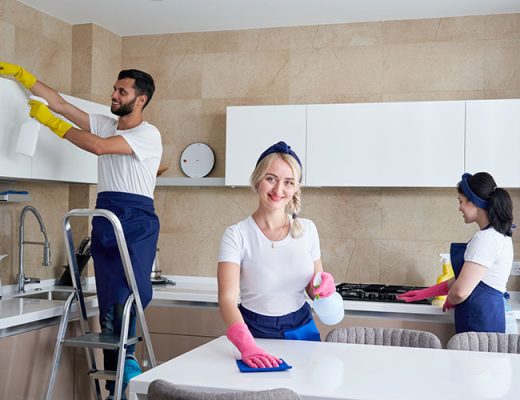Home. People throw the word around like it’s just bricks and wires, but anyone who’s ever dragged themselves into an apartment at the end of a miserable day knows it’s either your shield or it’s a trap. The walls and roof don’t matter much unless they do their job: protecting you, holding you, giving you a place to breathe when everything outside feels like too much. Some homes never get there, they stay stiff and temporary. Others, sometimes without fancy furniture or gadgets, end up feeling like the only place that makes sense.
Let’s talk about what actually makes that difference, the odd details that creep into comfort. It’s not always pretty. And sometimes the thing you think matters ends up being irrelevant, while something you ignored keeps poking at you until you deal with it.
Privacy is more than locks and doors
We live stacked on top of each other now. Apartments crammed, backyards overlooked, people oversharing online like their private lives were a TikTok trend. Privacy isn’t a luxury anymore, it’s survival. Cities hum with security cameras on every corner, drones overhead, even your phone chirping about how long you spent walking to the grocery store. No wonder it feels harder to just shut the world out.
At home, the little things count. Thick curtains that actually block the streetlight glow at 2 a.m. Window shutters that slam down when you need silence or solitude. They’re not glamorous but they’re functional, and on a hot day when the sun is frying your living room like an egg pan, they double as cheap air conditioning. Plantation shutters, if you’ve seen the modern versions, don’t peel and crack like the ones your grandparents had. They’re UV-resistant, clean with a quick wipe, and, yes, they make the house feel sealed against the chaos.
Funny story: last summer I bought blackout curtains thinking I was clever, but they made the room so dark I kept oversleeping, waking up groggy like I was in a cave. So now I switch them halfway closed and pretend it’s an intentional mood. That’s home: compromises between what you want and what actually works.
The silence you don’t notice until it’s gone
If you’ve ever tried to sleep while someone upstairs is vacuuming at midnight or a dog barks three floors down, you understand how much noise messes with your peace. Strangely, most people don’t check soundproofing when buying or renting. Empty houses fool your ears. Quiet rooms trick you because they don’t have clattering dishes or kids yelling yet.
Good walls, floors, even carpets can change everything. Soundproof windows, too, especially if you live near traffic. I once rented a place next to a main road where trucks passed all night. After a week of insomnia, I taped foam panels to the bedroom wall like some DIY podcaster. It worked halfway, but the stress of hearing engines in my sleep left me feeling like I was still in motion even when I wasn’t. Quiet is underrated. It’s not just absence of sound, it’s the ability to focus, to rest, to not lose your patience over things you can’t control.
Air that doesn’t suffocate you
Comfort is invisible most of the time. You don’t notice the temperature until it’s wrong. You don’t think about humidity until your windows drip with condensation or your throat feels like sandpaper.
Heating, cooling, ventilation, it all comes back to balance. Passive design (big phrase, simple idea) means setting up your home to stay stable without machines running constantly. Think insulation that keeps heat in during January and keeps it out in July. Think cross-breezes from windows you can actually open, rather than sealed boxes relying on noisy fans.
Humidity is sneakier. Drying laundry inside, cooking, even just people breathing adds water to the air. Without decent ventilation, mold creeps in. Black spots in the corners, damp smell that never leaves. If you’ve ever lived in a place like that, you know it’s not just gross, it eats into your mood. A proper extractor fan or even just cracking a window during showers makes a world of difference. Roofing too: some materials let the house “breathe”, others trap everything. Those details are invisible until you regret ignoring them.
Windows are your friend (or your enemy)
Windows set the mood of a house. Too small, and you feel boxed in. Too leaky, and every winter night becomes a shiver-fest under blankets. Energy-efficient windows might sound boring, but they saves money and sanity.
If your windows are ancient, drafts sneaking in, frames warped, you’ve probably thought about replacing them. It feels intimidating, expensive, messy. Some people do it themselves for the satisfaction. Others call a company and watch the magic happen in two days. Either way, it’s one of those upgrades you don’t regret because the change is so obvious. The room suddenly feels alive with light, warm when it’s supposed to be warm, cool when it’s supposed to be cool.
And yes, I once thought duct-taping the cracks would do the trick. Spoiler: it didn’t. Wind whistled through like the house was laughing at me.
Colors mess with your head
Walk into a pale-blue room after a long day. It feels like the world muted itself. Good for some, depressing for others. Paint everything fire-engine red and it’s like your brain’s on espresso shots.
Colors shift moods even if you don’t consciously notice. Dark and heavy shades drag you down. Overly bright walls overstimulate. There’s no formula because everyone reacts differently, but experimenting matters. I painted my kitchen yellow thinking it’d be cheerful. For six months it worked. Then it started to feel like being trapped inside a cartoon sun. Eventually, I switched to soft green, and suddenly breakfast stopped feeling exhausting.
Moral: your walls affect your emotions more than you think. And the good news: paint is cheap enough to keep trying until you land on something that doesn’t annoy you.
The clutter problem nobody admits
Comfort isn’t only structural. It’s also psychological. Stuff piles up fast. Gadgets, decor, souvenirs, plastic containers you swear you’ll reuse. At first, it feels like a sign of life. Later, it clogs the air.
Minimalist home decor sounds trendy, but it’s really just asking yourself: does this object make my life lighter or heavier? That’s it. Too many appliances, too many decorations, and suddenly cleaning feels impossible, moving feels impossible, even relaxing feels like work.
I did a purge once, filling six garbage bags in one weekend. The emptiness afterwards was shocking, almost uncomfortable, like the house had too much echo. But within weeks, the space became breathable. Having fewer things gave me more space for moments. Friends dropping by, sitting on the floor with coffee, not worrying if someone knocked something over.
The human part we forget
Even if you fix the air, the walls, the windows, the colors, none of it matters if the people inside aren’t kind to each other. Comfort is shared. A silent home where nobody talks feels heavier than one with kids running through hallways. Relationships shape how we perceive space. A messy living room with laughter still feels better than a pristine one full of tension.
Home isn’t just protection from the world, it’s also the stage where your life unfolds: quiet breakfasts, arguments, lazy Sundays, birthdays, disappointments, recovery. That’s why chasing comfort is worth the effort, even if it sometimes feels like fighting small battles against drafts, damp walls, or an ugly paint job.
Feeling good at home is messy. It’s a mix of materials and moods, gadgets and human quirks. Some fixes are technical, like insulation, shutters, better windows. Others are emotional, color, clutter, relationships. If the world outside feels like it’s spinning too fast, your home doesn’t need to be perfect. It just needs to feel like yours.
Tags: home comfort, energy-efficient windows for houses, blackout curtains for privacy, plantation shutters for homes, soundproof windows for home comfort, passive home design for energy efficiency, interior paint colors, minimalist home decor trends, best ways to improve home comfort, DL019






